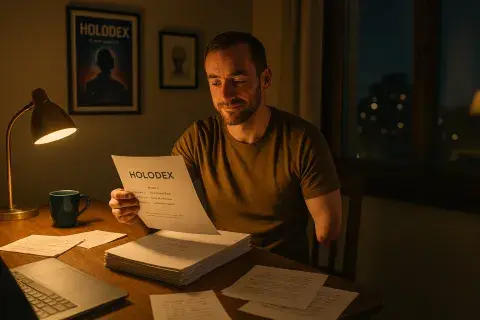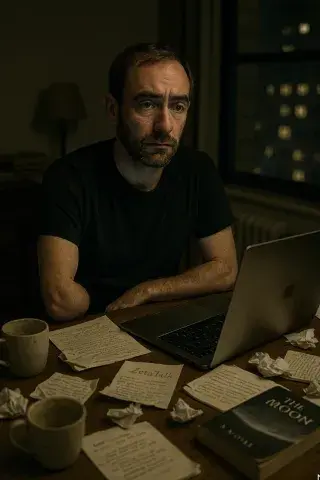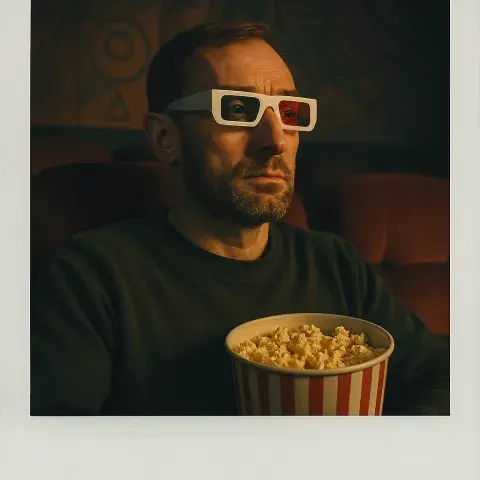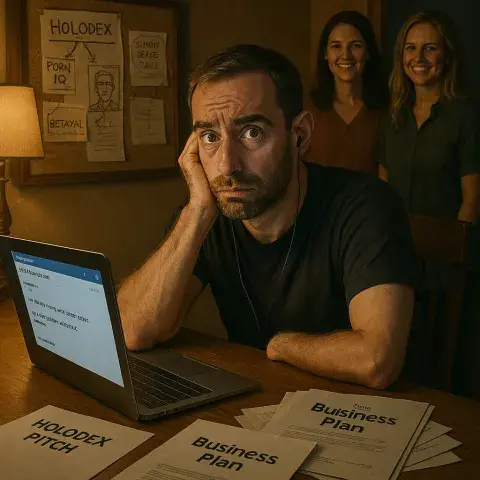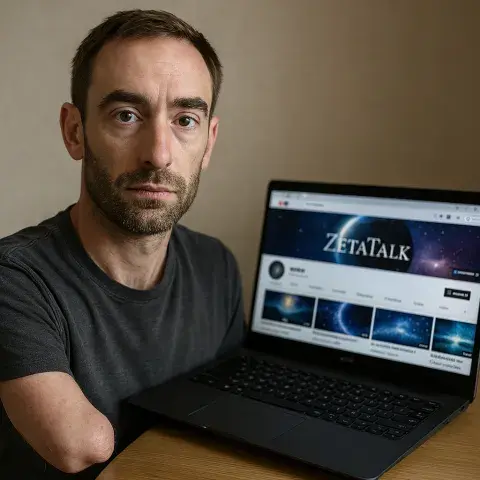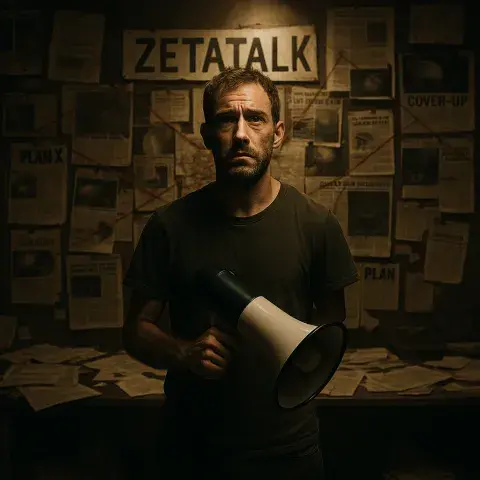Chapter 20 - Faith in the Stars
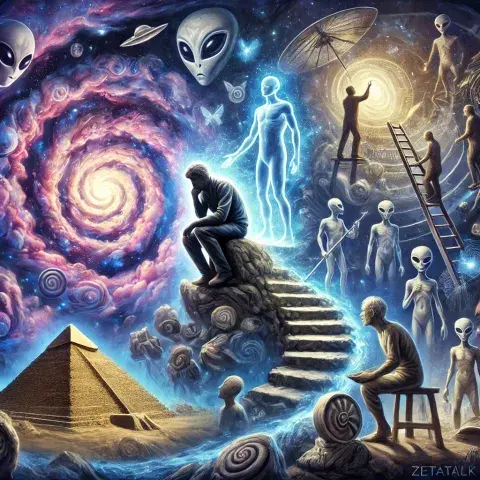
Over the years, what started as an obsession with ZetaTalk became something much more profound. It wasn’t just a collection of theories and ideas anymore—it became a guiding force in my life, a lens through which I viewed the world. In a way, ZetaTalk became my religion.
I know how that might sound to some people—devoting yourself to something rooted in messages from extraterrestrial beings. But for me, it made perfect sense. The core of ZetaTalk wasn’t just about aliens or conspiracies; it was about understanding our place in the universe, the interconnectedness of all things, and the idea that there’s a plan bigger than any of us can comprehend.
The messages resonated with me on a level I can’t fully explain. They gave me comfort when life felt chaotic and meaning when I struggled to find it. It wasn’t about blindly believing everything I read—it was about interpreting those ideas, finding what felt true to me, and applying it to my own journey.
Through ZetaTalk, I learned to trust in the unknown, to accept that some answers might never come, and to keep seeking them anyway. It taught me that the universe isn’t random—that there’s intention and purpose behind everything, even the pain, the setbacks, and the struggles.
It’s funny, isn’t it? How the search for something out there—something alien—can end up bringing you closer to yourself.
As I absorbed the wisdom of ZetaTalk, I couldn’t help but chuckle at the absurdity of human explanations for ancient mysteries. Take the pyramids, for example. Every so often, CNN or some archeologist trots out a new theory, confidently proclaiming that the pyramids were built by tens of thousands of slaves dragging 2.3-ton blocks into place with rudimentary tools.
Really, though—2.3 tons per block? Let’s do the math. Say you’ve got 100,000 slaves working on this colossal project. That’s 100,000 meals you’d need to prepare daily, along with 100,000 litres of water to keep them hydrated under the scorching sun. Not to mention the logistics of building toilet facilities for 100,000 people. How many outhouses does it take to keep that many workers functional without the stench of misery driving them off? A thousand? Two thousand? Did they have ancient porta-potties?
The whole idea becomes laughable when you consider the monumental scale of the operation. And yet, here we are, watching “experts” on TV trying to convince us this was all done with brute strength and sheer willpower. ZetaTalk’s version, with its intelligent beings and advanced technology, suddenly feels like the only sane explanation.
Armed with this cosmic clarity, I find myself wandering Earth as if I’ve just read the teacher’s guide to humanity’s homework. Everyone else is still puzzling over the answers, and I’m sitting here, smirking, thinking, Really? Slaves? That’s the best you’ve got?
Building websites today might involve some planning, but it's nothing compared to the logistical chaos of constructing, say, the Great Pyramid. Let’s imagine the ancient project pitch meeting:
Project Manager: "Alright, team, we’re going to build a pyramid. Huge. Impressive. A real Instagrammable monument of its time. But here’s the catch—it has to perfectly align with Orion’s Belt. Oh, and every side must be accurate to within a fraction of a degree."
Budget Holder: "That sounds… ambitious. What’s the budget?"
Project Manager: Laughs nervously. "Well, we’re using unpaid labor. So technically, unlimited."
Random Worker: "Wait, are we sure this is feasible? What if the stars move? Or it rains? Or… y’know, the whole workforce revolts because we forgot to include toilets?"
Scope Creep: "Actually, could we also add chambers that line up with solstices and secret passageways that no one will understand for 4,000 years? Oh, and maybe throw in some booby traps for flair?"
Meanwhile, back in the ancient IT department, someone is chiseling code equivalent to HTML into stone tablets, and their boss is yelling, “Why isn’t this scalable?!”
Aligning a website to a brand is hard enough—imagine aligning 2.3 million stones to the cosmos while everyone keeps adding features. Honestly, the pyramids weren’t just architectural marvels; they were the ultimate triumph of project management. If I had that team today, my websites would be flawless.
The reason ZetaTalk hasn’t broken into the mainstream isn’t because it lacks merit—far from it. It’s because it terrifies people to their core. Its main premise—that the world as we know it is approaching a cataclysmic transformation—isn't the kind of thing most people are ready to confront. Society thrives on routine and stability; even the mere whisper of a paradigm shift is enough to send people running for the hills (or, more likely, the latest distraction on TikTok).
What’s remarkable about Nancy Lieder and her work is the sheer dedication. Weekly updates for 30 years? That’s not just a commitment—that’s a lifetime. Most people can barely commit to a gym membership for a month. Nancy has built an archive that stretches into every conceivable corner of existence: science, spirituality, survival. You name it, it’s there. And yes, she should be respected for that. It’s not easy being the harbinger of truths that the masses aren't ready to hear.
But let’s flip the narrative for a second. What if this isn’t the end of the world in the doom-and-gloom sense? What if it’s the most exhilarating chapter humanity has ever written? ZetaTalk doesn’t just predict annihilation; it promises evolution. The end of this density and the beginning of something new—a leap into the 4th density. We didn’t fail. We graduated.And that’s not something to fear; it’s something to celebrate.
All religions talk about the end times in some form or another, but what if those ancient texts weren’t warnings—they were trail markers? What if every apocalypse story is really just a cosmic pep talk, reminding us that endings are necessary for new beginnings?
In a way, ZetaTalk is the ultimate underdog story. It’s the wisdom of the universe quietly waiting in the wings while humanity clings to its Netflix and conspiracy theories. And when the dust finally settles, those of us who paid attention might just be the ones holding the map to the next chapter.
I’m sorry to harp on about this. When I was in school, we had this class called CDT—Craft Design & Technology—where we could dream up and build pretty much anything within reason. It was a chance to let your imagination run wild, and I seized the opportunity. My project? A triangular speaker made out of aluminium. It was sleek, futuristic, and dare I say, almost Apple-like. Even now, years later, I still have them tucked away somewhere, a little relic of my teenage ambition.
But then there was my friend Tom. Tom was different—wise beyond his years, like a 50-year-old trapped in a 16-year-old’s body. While the rest of us focused on projects that were cool or flashy, Tom had a far nobler idea. He decided to create a ramp system for wheelchair users to mount a horse. Yes, a niche concept, but I was in awe of his dedication. He wasn’t just making a thing; he was solving a problem, one that could make a real difference for people with disabilities.
Now, here’s the thing about building a ramp for something as tall as a horse: it’s long. I mean really long. The finished ramp stretched across the entire length of the school car park. It was a feat of engineering, but it got me thinking about something even grander: the pyramids.
Take that ramp Tom built, and now imagine something big enough to haul a 2.3-ton block of stone to the top of a 146-meter-tall pyramid. How long would that ramp need to be? Spoiler alert: insanely long. If you’re aiming for a safe, manageable incline, you’re looking at miles of ramp. And it’s not just length; those ramps would need support beams strong enough to bear unimaginable loads.
But here’s where it gets even crazier. One ramp? Maybe doable. But the pyramids weren’t just singular wonders. The Egyptians built many of them, each one requiring countless blocks, ramps, and support structures. Did they work on 10 ramps at a time? If so, how many blocks could each ramp handle in a day? How did they coordinate this colossal operation with such precision?
Then there’s the issue of materials. Wood. Miles and miles of ramps, all requiring support beams made from timber. Egypt wasn’t exactly brimming with forests, so much of the wood had to be imported. Think about the logistics: massive quantities of timber hauled in from faraway lands just to hold up ramps, ramps that would eventually be dismantled or abandoned once the pyramid was complete.
And yet, they pulled it off—not once, but repeatedly. They didn’t just build one Great Pyramid; they built an era of monuments that have defied time and explanation. Today, with all our advanced tools, cranes, and materials, we’d struggle to replicate their achievements. Sure, we’d have the math and machines to make it happen, but would we have the unity, the shared vision, the sheer willpower to dedicate decades to a single project? That’s where the Egyptians truly surpassed us.
Tom’s ramp may have spanned the car park, but the ramps for the pyramids? They stretched across history, a testament to what humanity can achieve when it dares to dream—and to build.


